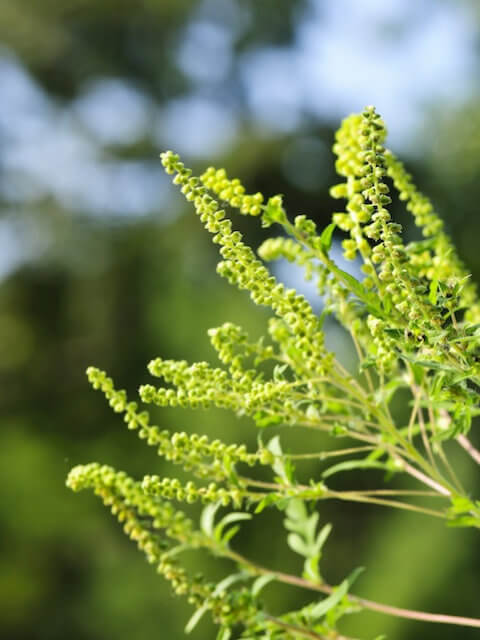Mugwort Pollen Allergy
Mugwort pollen comes from the mugwort plant, a common weed found in many parts of the world. Mugwort is known for its tiny, wind-carried pollen grains.

These grains can cause allergic reactions in some people, especially during certain times of the year.
Just like ragweed, birch, and alder, mugwort is a common cause of seasonal allergies. These allergies are triggered when your immune system reacts to the pollen in the air, thinking it's harmful.
This can cause a range of symptoms, which we'll discuss below.
Symptoms of a Mugwort Allergy
- Sneezing
- Runny or stuffy nose
- Itchy eyes, nose, or throat
- Red, watery eyes
- Wheezing or coughing
- In severe cases, asthma symptoms may worsen
Where is Mugwort Pollen Found?
Mugwort pollen is found all over Europe, Asia, and North America. The plant thrives in meadows, along roadsides, and even in gardens. It's particularly common in areas with lots of open land.
In Europe, mugwort pollen is especially widespread in bigger cities like Berlin, Paris, Vienna, and Budapest.
The pollen can travel far because it's light and easily carried by the wind. This means even if you don't live near mugwort plants, you could still be affected by their pollen.
When is Mugwort Pollen Season?
Mugwort pollen season usually starts in mid-July and can last until early September. During this time, people who are allergic to mugwort pollen may experience symptoms whenever they go outside. The highest pollen counts are often found in August.
It's important to know that the exact timing of mugwort pollen season can vary depending on where you live. In warmer places, the season might start earlier, while in colder regions, it could begin later.
Treating a Mugwort Pollen Allergy
- Antihistamines: Over-the-counter antihistamines can help reduce sneezing, itching, and other symptoms.
- Nasal sprays: Nasal sprays can help with a runny or stuffy nose.
- Eye drops: Eye drops may be useful for itchy, red, or watery eyes.
- Allergy shots: In more severe cases, allergy shots (immunotherapy) might be recommended by a doctor.
- Avoidance: Staying indoors during peak pollen times, especially in the morning, can help minimize exposure.
- Air filters: Using air filters in your home can help remove pollen from the air.
Check Pollen Levels for Alder Pollen
See the current alder pollen levels across Europe on our Pollen Map (select "alder" on the map options).
You can also sign up for pollen alerts to be notified of high alder pollen days in your city.